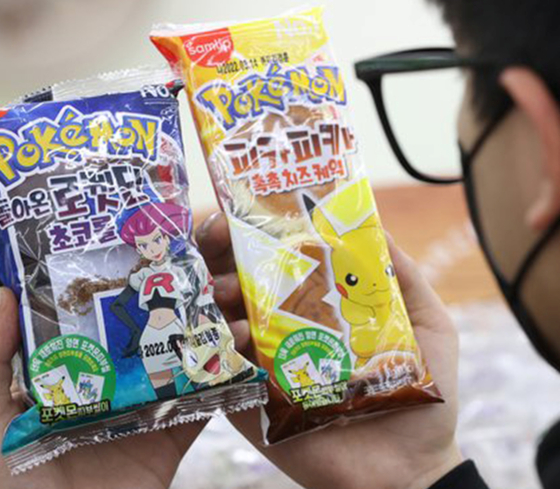[Journalism Internship] Young generations find retro is back in the roaring 2020s
Choi Ye-jin, 20, a college sophomore, has always embraced recent fashion trends. However, nowadays, as she walks the streets and observes people’s way of dressing, she cannot help but notice that people are indeed wearing flared trousers again, which goes down a long line of fashion trends to the late ‘90s.Choi, at first, assumed that it was still out of style and found it rather peculiar that people were bringing back items from the past. How- ever, as time passed, the professed retro-style approached her as an unusual and effective way by which she could express herself.
“Retro style is a way of connecting the past and the present,” Choi said.
After decades have passed, with considerable transformations to the tendencies of wearing, watching, and consuming, the forgotten items and commodities from past generations’ childhood are gradually returning to the mainstream market to be adored by the younger generations.
Take a peek at the supposed vintage wear-ables sensation as the foremost example of the growing demand for older pieces embedded with nostalgia. Preeminent in the late ‘90s, the so-called flare trousers, or bell-bottoms, were once the must-have item for the young and hip population. Korea was no exception to such a phenomenon. From metro stations to schools, many of those deemed fashionable wore their fair share of such clothing during the eratimes.
Many television programs have paved the way for retro clothing and garments inspired by the past. With the nationwide success of the dancing survival program “Street Woman Fighter,” which aired in 2021, Shinsegae Department Store announced they saw an increase in the popularity of street fashion brands in its clothing sectors, including 61 percent growth in sales for streetwear garments, which were primarily consumed by the younger population. The streetwear category comprised of baggy jeans, oversized T-shirts, and more items soft-soaped by the decades-old leading fashion trends, ac- centuating the return of past sensations.
Apart from the return of fashion tendencies, treats and snacks enjoyed by earlier generations back in the ‘90s have also experienced a re-awakening of popularity due to the retro revival.
“I feel like Pokemon bread is an escape from reality,” said Lee Ji-youn, 46, recollecting her memories of eating the snack when she was a teenager. “I go back to the time when I had no concerns in high school.”

Pokemon
Pokemon bread was adored by many and was widespread back in the ‘90s. SPC Samlip, the manufacturer of the Pokemon bread, re-released the pastry product earlier this year with the same stickers and bread as before. According to SPC Samlip, the sales of Pokemon bread surpassed 10 million within 43 days after it was relaunched.
Pokemon bread was not the only successful case of a retro comeback in 2022. The alleged “old-but-gold” enthusiasm also hit popular culture. With a succession of retro-inspired pop culture, such as TV shows, dramas, and songs, the antiquated forms of media are once again gaining popularity among the public.
For instance, “Twenty-Five, Twenty-one” is a Korean TV show set in the late ‘90s. In the show, viewers can find various props from the distinct period, with a hefty depiction of youths’ lifestyle back then. For example, the protagonist and ambitious fencing player in the show, Na Hee-do, listens to music with a Walkman and cassette tape, a favored music player that has in- spired many listening gadgets in today’s society.
Moreover, products such as “bbibbi,” green payphone, and CD players appear in the show. For those who were around and active in the ‘90s, the drama “Twenty-Five, Twenty-one” plunges them into nostalgia, entitling them to recall their memories and see how much has changed since then.
On the other hand, the drama tends to be full of surprises for those who did not directly experience that era. As such, it exhibits the distinct standpoints of the different age groups.
“I recalled my high school life when I watched Twenty-Five, Twenty-One,” said Choe Hansel, 45. “I loved it because what Na Hee-do does in the drama is the same as what I did in high school, young and ambitious. I thought I could achieve anything in the world then.”
Oh Soo-min, 18, a high school student, considers the drama heartwarming and realistic. “Since I was born in 2004, I went through what many call the digital generation,” said Oh. “Thus, the human analog brings a warm embrace in the harsh digital era.”
BY JE GANG-HYUN, HONG HYE-SEO AND OH SANG-HOON [ganghyun.je@stonybrook.edu, hyeseo.hong@stonybrook.edu, sanghoon.oh@stonybrook.edu]










with the Korea JoongAng Daily
To write comments, please log in to one of the accounts.
Standards Board Policy (0/250자)